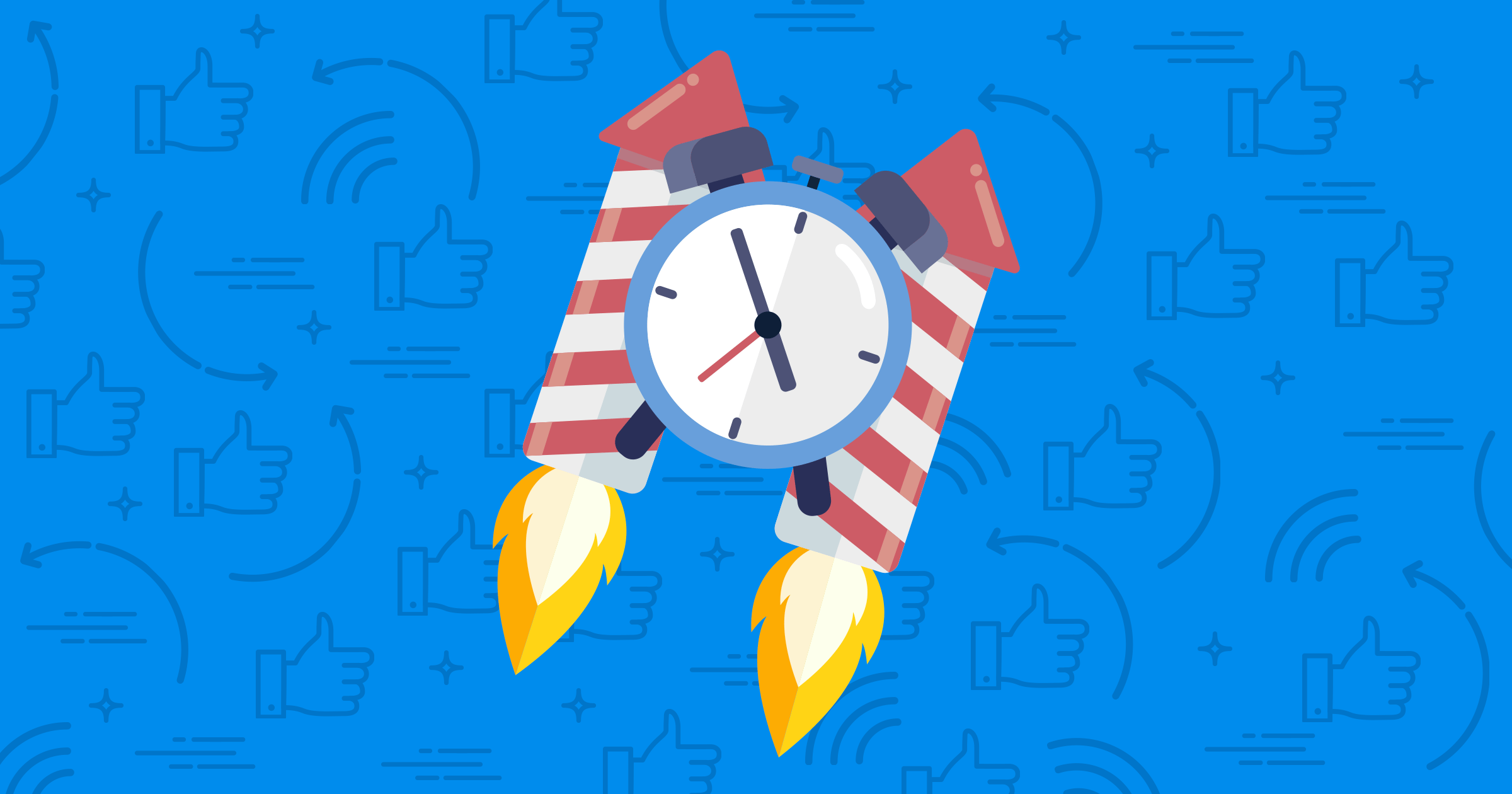
Why There’s No Perfect Time to Post on Facebook
Head of Content at Buffer
Finding the best time to post to Facebook can massively help your business stand out and reach more of your audience—even as Facebook organic reach continues to decline.
But knowing the best times to post, can be a challenge and we’d love to help.
In this guide, we’ll share exactly how you can find the best time to post content on your Facebook Page for maximum reach, exposure, and engagement.
Ready to jump in?

Is there a best time to post on Facebook?
There probably isn’t a single best time to post on Facebook.
Plenty of studies that have attempted to uncover a ‘best time to post to Facebook’, Twitter, Instagram and almost every other social media marketing channel, with each study finding a wide range of results (we’ve even created our own studies here at Buffer).
According to studies, here are the best times to post to Facebook:
Thursdays and Fridays from 1 p.m. to 3 p.m. are the best times to post on Facebook [Hubspot]
Thursday at 8 p.m. [TrackMaven]
1–4 p.m. late into the week and on weekends [CoSchedule]
Early afternoon during the week and Saturdays [Buffer]
Off-peak times are best [Buzzsum0]
All of these studies can be helpful to point marketers in the right direction. But almost every study reveals a different ‘best time to post’ and, in reality, the best time to post depends on a number of factors that are specific to every business: What’s your industry? In what location is your audience based? When are they online? Are you sponsoring your post?
We’d love to flip the conversation and say that instead of looking for a universal ‘best time to post’, maybe we should be focusing specifically on when is the best time for your brand to post.
Why there’s no universal best time to post on Facebook
The content crush is truly upon us. There’s more content shared to Facebook than any of us could ever consume, and as such, Facebook’s News Feed algorithm helps to determine what is shown to us every time we open up Facebook.
On their Business blog, Facebook’s VP of Advertising Technology, Brian Boland explains:
On average, there are 1,500 stories that could appear in a person’s News Feed each time they log onto Facebook. For people with lots of friends and Page likes, as many as 15,000 potential stories could appear any time they log on.
As a result, competition in News Feed — the place on Facebook where people view content from their family and friends, as well as businesses — is increasing, and it’s becoming harder for any story to gain exposure in News Feed.
Whenever you post to Facebook, you’re essentially competing against at least 1,500 others post for a place in the News Feed and timing is only one of a number of factors that determines which content appears.
With this in mind, it’s also possible that the best time to post could also be the worst time. Let’s say a study found the best time to publish is 6pm on a Friday, and every brand was to try and push content to their audience at that time, it’s likely that very few of those posts would be seen due to such high competition. The same is true for saying off-peak times are best to publish – if all brands post off-peak then there will be more competition, and so they should go back to posting at peak time.
It’s all very muddled and there’s no clear answer. As such, I’d argue that there’s no specific time that’s best to post to Facebook.
So, when should you post to Facebook? A couple of strategies you can try
If there’s no ‘best’ time to post, how do you decide when to share your content to Facebook?
To answer this question, I feel like there are two approaches we could use:
- When your data tells you
- When it’s relevant
1. When your data tells you
When it comes to marketing and digital strategy, the best data is always your own. And, thankfully, Facebook has a ton of data available for all page owners and admins. A comprehensive understanding of your own audience on Facebook and how your content is performing will bring more success, than generic insights drawn from studies on a wide variety of Pages from a range of industries and brands.
2. When it’s relevant
This one is a little less scientific. But some content will work best in-the-moment or at a time when it’s most relevant. A great example of this is the content many sports teams share to Facebook to update fans on the scores or breaking news.
For your business, the same can also be true. Some pieces of content will perform best when they’re relevant. For example, the best time to share content related to the launch of your new product tends to be directly following the announcement. Or if you had an advert on a local TV station, it’s best to create and share social content around the same time that it’s broadcast.
How to use Insights to find your best time to post on Facebook
If you’re looking to find the best time to post on Facebook, the first best place to start is Facebook Insights.
To see your Page Insights, click Insights at the top of your Page:
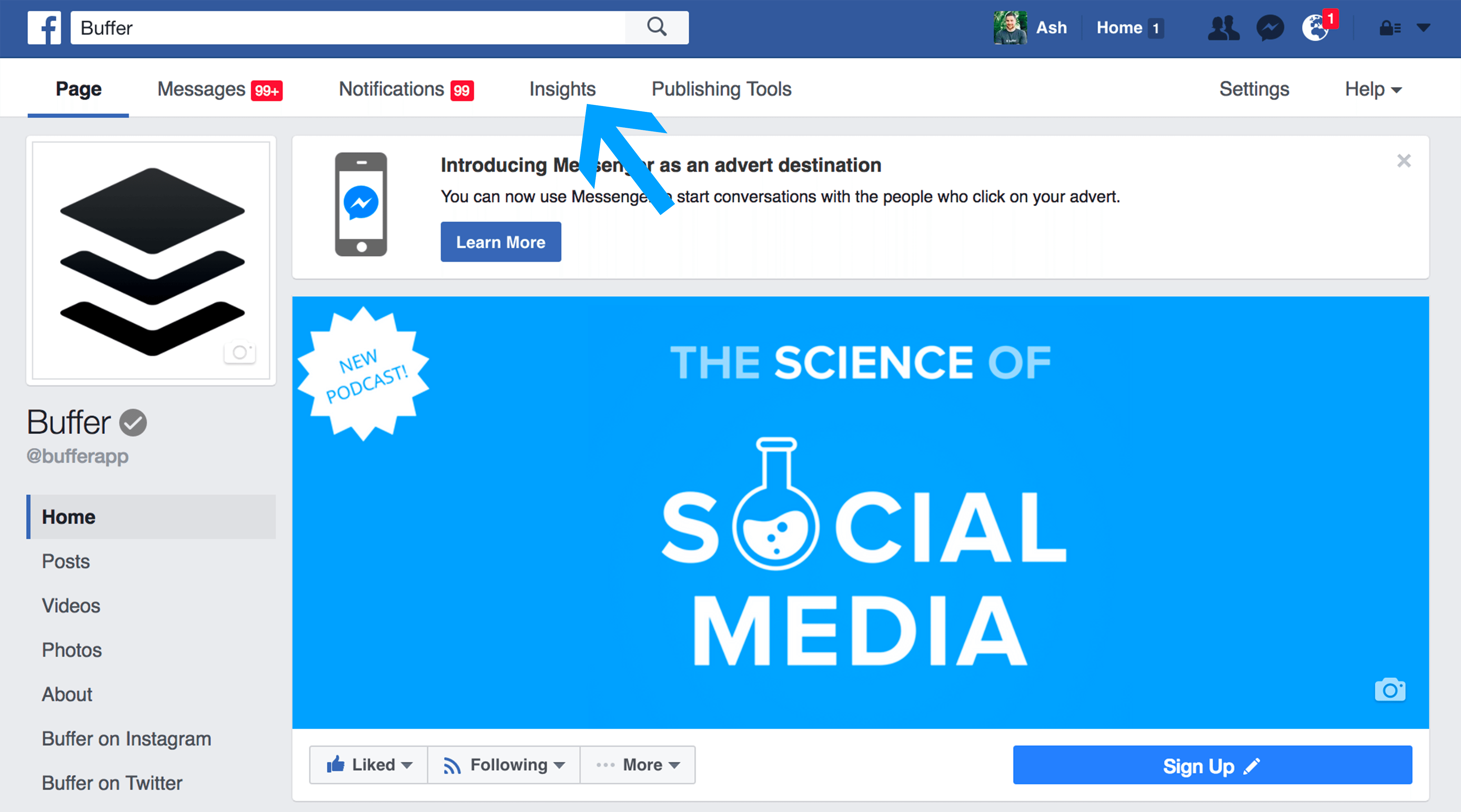
Once you’re in the Page Insights dashboard, there’s a wealth of data available to you. For this post, though, we’re going to dive into a couple of specific areas to help you discover when to post your content.
How to find out when your fans are online
From the Insights dashboard, select Posts in the left-hand column menu. This will take you to a detailed breakdown of the days and time your fans are most active on Facebook: 
This chart shows the average times across the week. You can hover over each individual day to see an overlay of how that day looks vs the averages. Here’s an example of how Sunday’s tend to look for our Page (the dark blue line is data for Sunday):
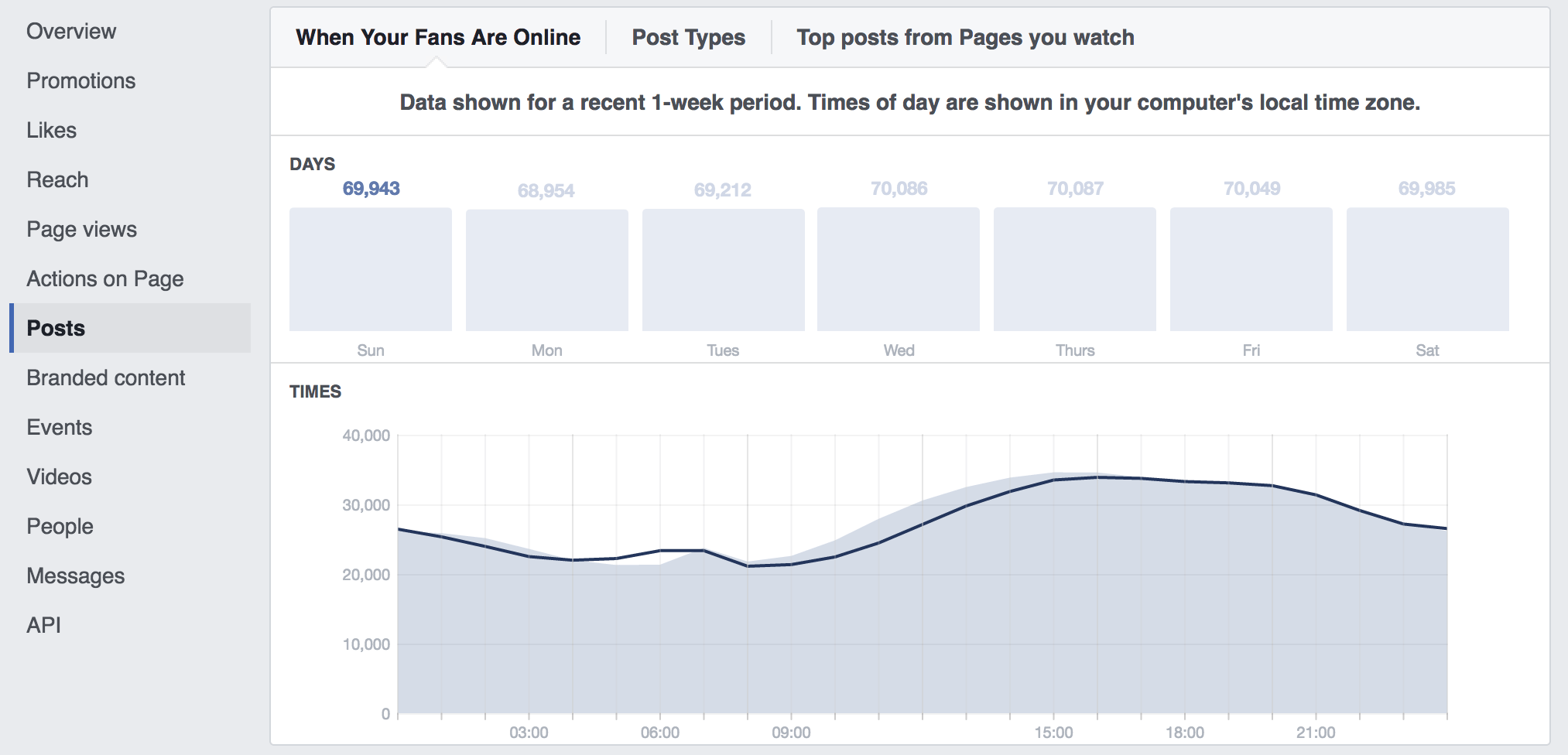
What does this data tell us?
Here at Buffer, we can see our audience is online 7 days per week and that there’s no specific day where we see a spike. We can also see that from around 9 am in the morning the number of people online is gradually increasing up until around 4 pm where the number begins to decline slightly.
There are plenty of ways to interpret this data. But, to me, this would suggest our best times to post are during the work day between the hours of 9 am – 5 pm when our audience are most active on Facebook. I’d recommend testing a variation of times between those hours to see what works and if there’s a best time at all.
Another experiment we’ve been trying off the back of this data is posting at off-peak times. Brian, our social media manager, has recently been posting when less of our audience is online and we’ve been seeing some success between 3 am – 5 am.
How to find posting times of successful posts
Facebook Insights records reach and engagement figures for every post you share to your Facebook Page. This data can be found in the same place as the data for when your fans are online. Head to your Page Insights, click Posts and below the graph showing times your fans are online, you’ll see ‘All Posts Published’.
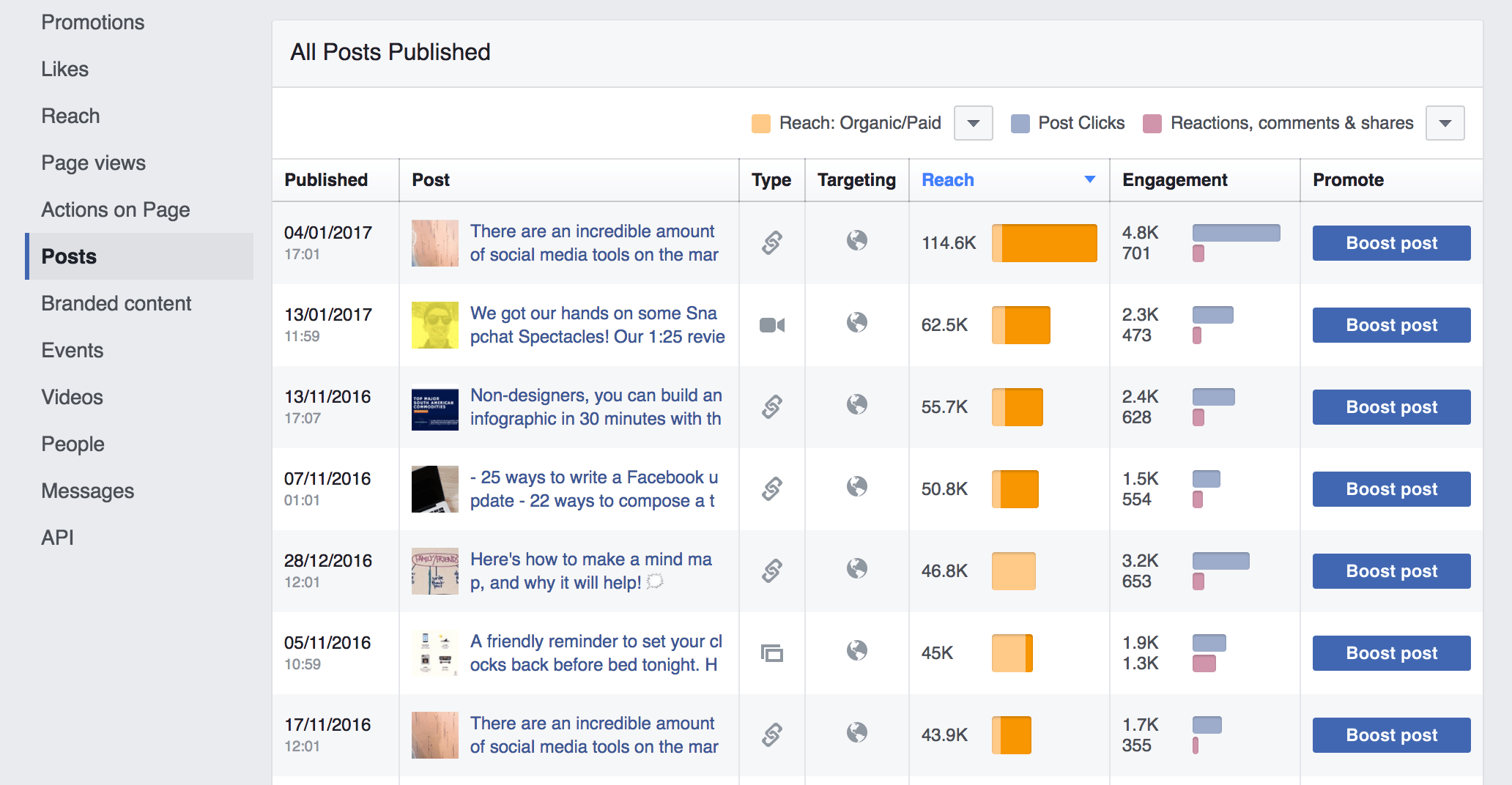
Here, in the ‘Published’ column, you can see the date and time when each post was published to your Facebook Page. With this data you’re looking out for any trends regarding the times. For example, do posts published around a specific time tend to receive more reach or engagement.
Note: If your posts are Sponsored or Boosted (like many of ours in the above screenshot), this could also skew your data a little as these posts are likely to gain significantly more reach than organic posts regardless or the time they’re published.
What does this data tell us?
Personally, I think our data on the Buffer Facebook Page is pretty inconclusive at the moment. It’s clear that posts published between around 10 am – 12 pm seem to do well, as do posts at around 5 pm. But I’d love to test a bunch more variables before making any clear conclusions.
Putting your data into action
Once you’ve identified your best times to post to Facebook, it’s worth testing those assumptions in the real world. One of the easiest ways to do this is by scheduling your Facebook posts—this saves you from having to open up Facebook and manually post at each of your best times.
Buffer offers a simple and intuitive way to schedule your Facebook posts at the ideal times. Here’s a quick guide on how to test your best posting times using Buffer:
1. Connect your Facebook Page to Buffer
First, head over to your Buffer dashboard.
Then, if you’re on the free Individual Plan, click the Connect More button at the bottom left of your dashboard and then click Page or Group under the Facebook option.
If you’re on a paid plan (Awesome, Business, Enterprise), click on the Add a Social Account button at the top left of your dashboard and then choose Facebook Page or Facebook Group.
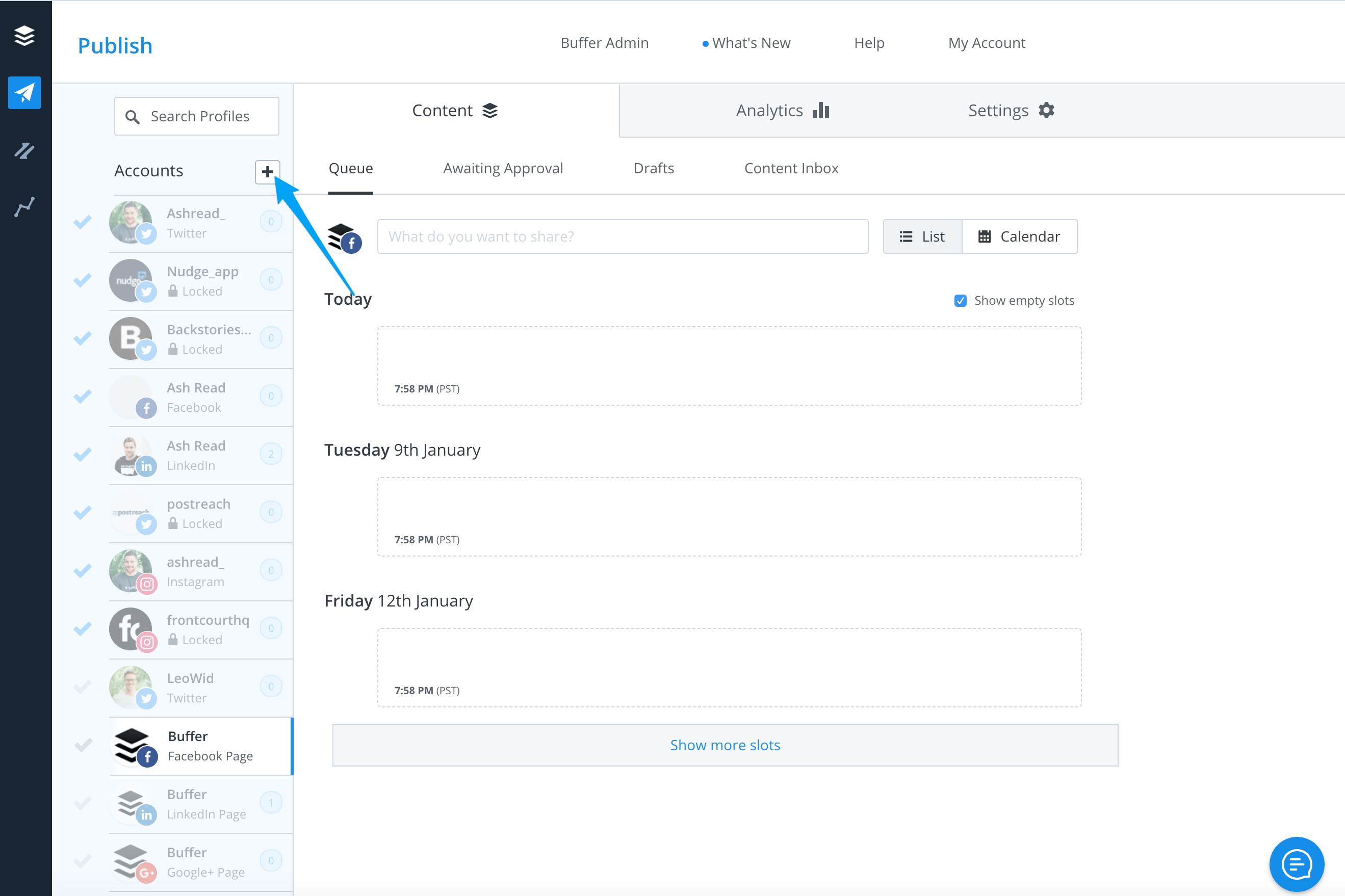
2. Set up a new scheduling time
Once you’ve connected your Facebook Page to Buffer, you can set your ideal posting times as a schedule and Buffer will automatically schedule your content for those best times.
To set up a new schedule, select the social account you’d like to customize the posting schedule for on the left hand side of your dashboard and then click on Settings > Posting Schedule.
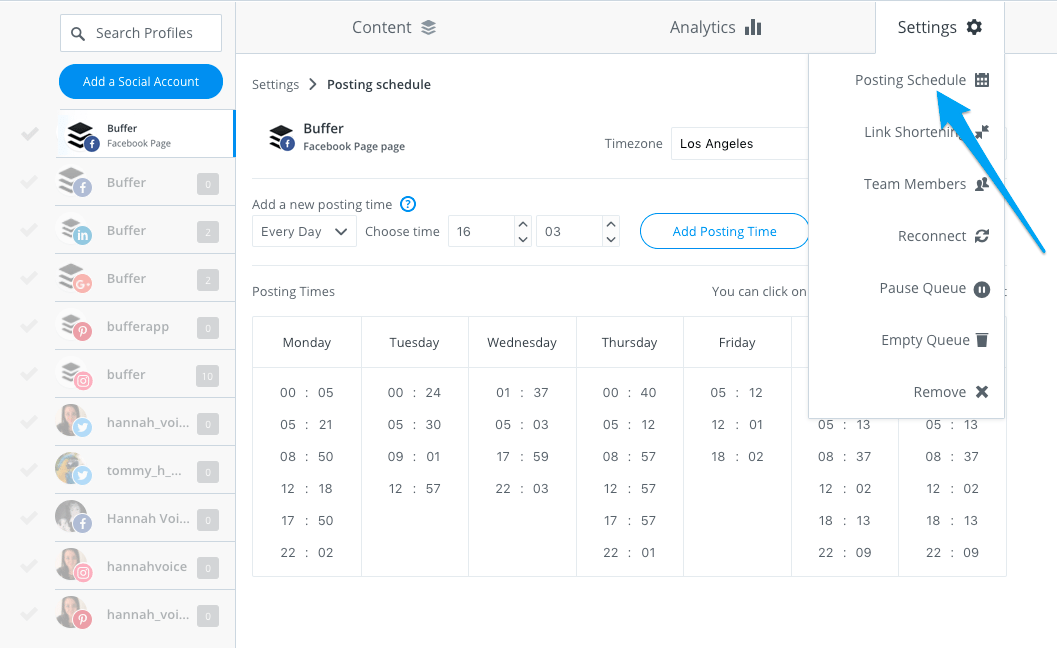
From the drop down menu, underneath “Add a new posting time”, choose the day or days you’d like to add the time to. In addition to being able to select specific days, you can also choose to add a posting time to “Every Day”, “Weekdays” or “Weekends”. Then, select the time you’d like to add and then click Add Posting Time.
Once a time has been added to your schedule, it can be modified by changing the hours and/or minutes. Times can be deleted from your schedule by hovering over the time and clicking the X icon.
3. Add content to your queue
Now you’re all set and ready to start scheduling content.
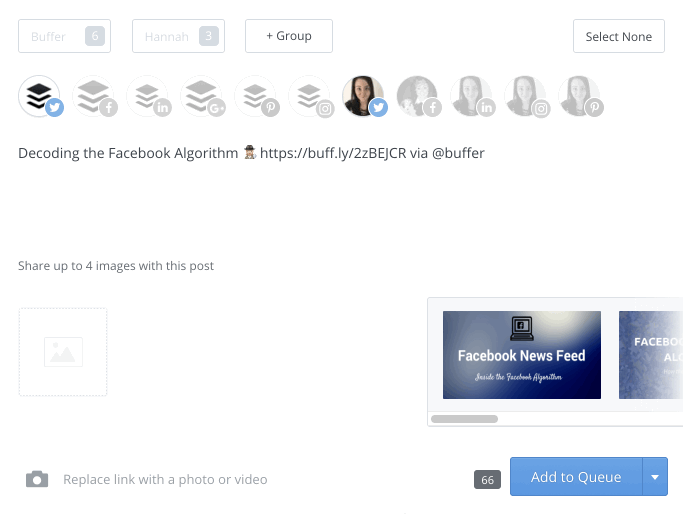
When you’re scheduling posts, you don’t need to think about the date and time it should be published, all you need to do is add it to your Queue and it will automatically be placed into the next available time slot and published as part of your usual posting flow.
Focus on sharing great content (as well as the best times)
When one of your Facebook friends gets married, the chances are you’ll see their wedding photos stuck to the top of your News Feed all day, regardless of the time they’re posted. This happens because wedding photos, whether you like them or not, are great content and as soon as they’re posted, a bunch of people rush to like, share and comment on them.
If you want to succeed on Facebook, your content will be just as important as the timing.
Try Buffer for free
140,000+ small businesses like yours use Buffer to build their brand on social media every month
Get started nowRelated Articles

TikTok's parent company must divest the app or face a ban in the U.S. Here's everything we know, plus how to plan ahead.

Whether you’re a full-time content creator, micro-influencer, nano-influencer, or just getting started, here’s how to create your own influencer media kit.

In this article, get answers to questions about social media for solopreneurs.